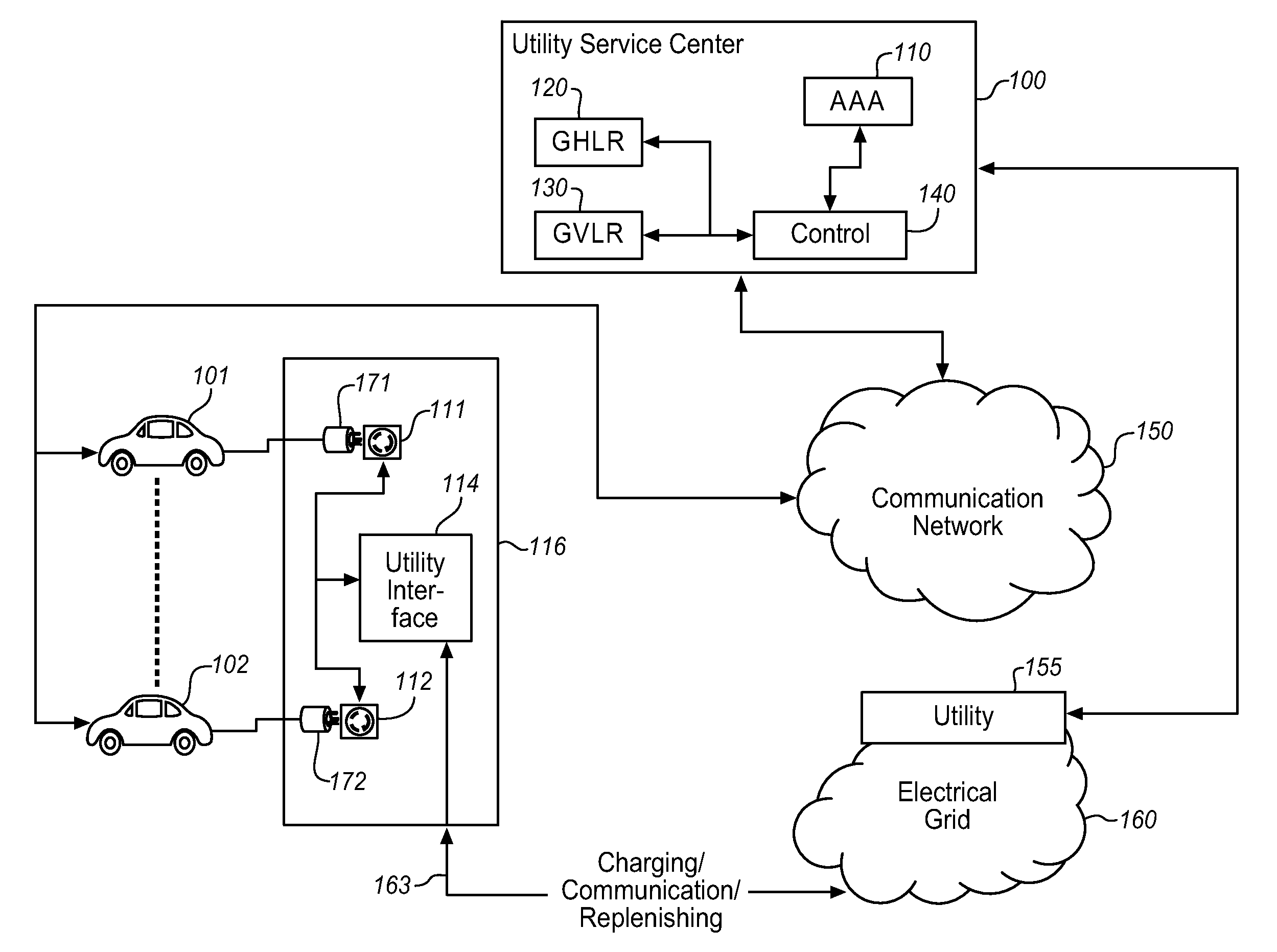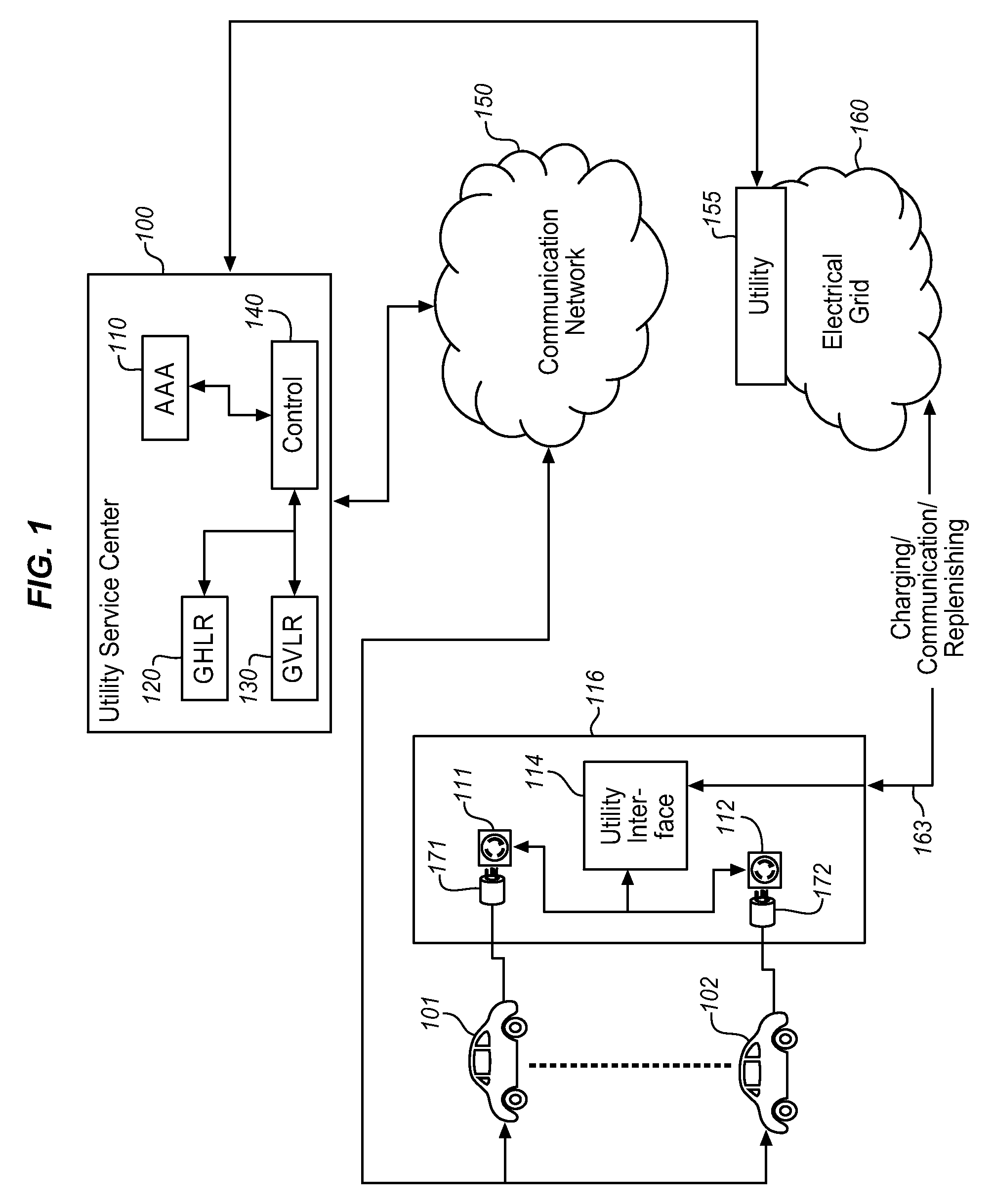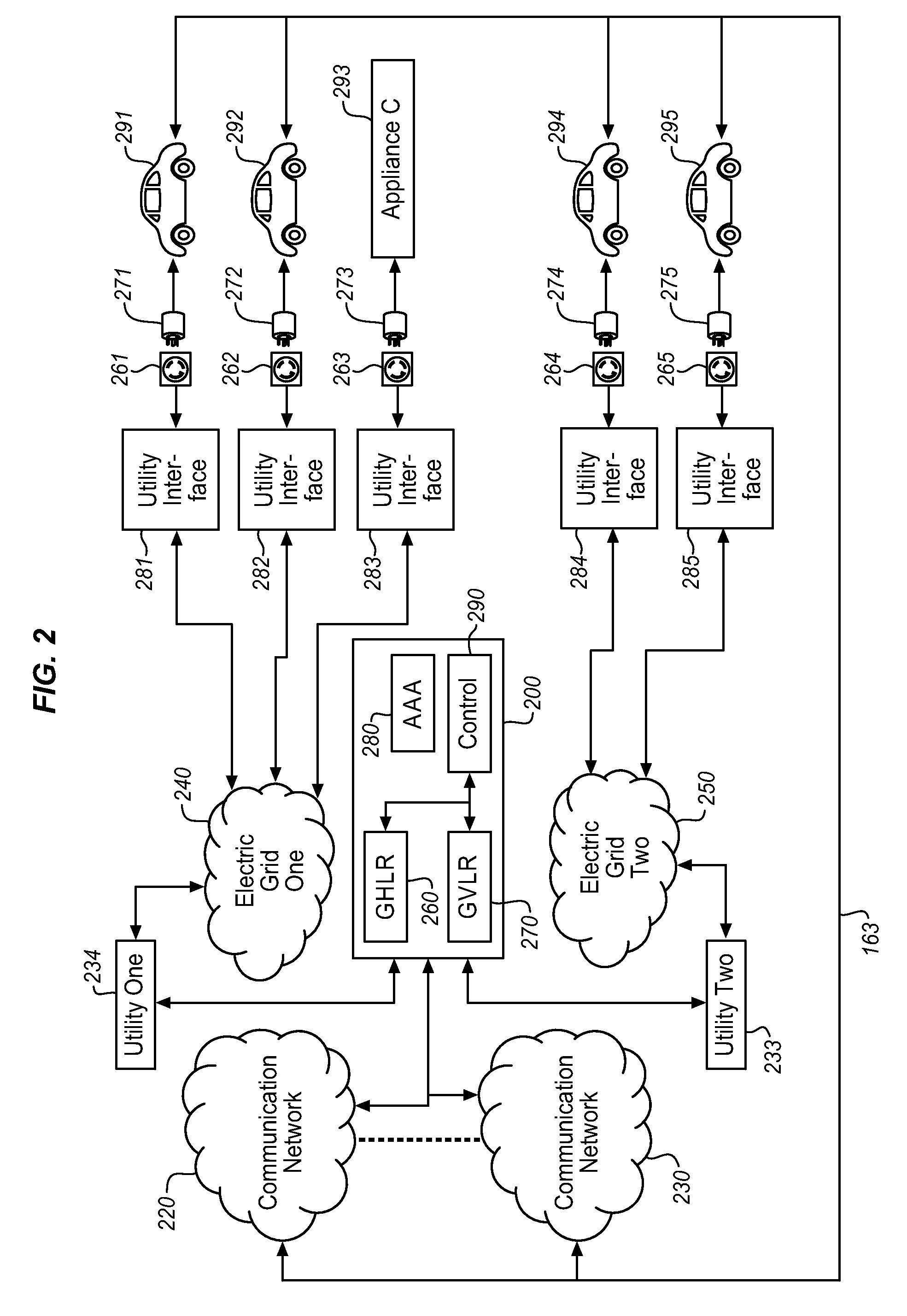Dynamic load management for use in recharging vehicles equipped with electrically powered propulsion systems
- Summary
- Abstract
- Description
- Claims
- Application Information
AI Technical Summary
Benefits of technology
Problems solved by technology
Method used
Image
Examples
Embodiment Construction
[0039]FIG. 1 illustrates, in block diagram form, the E-Grid network architecture, including interconnected communications networks with a unified authentication, authorization, and accounting structure; while FIG. 2 illustrates, in block diagram form, a more detailed embodiment of the E-Grid network architecture shown in FIG. 1. In the following description, the term “Vehicle” is used, and this term represents any mechanism which includes a propulsion system powered, at least in part, by electric power, at least some of which is stored onboard the vehicle in an electric power storage apparatus, as well as any electric power consuming loads incorporated into, transported by, or associated with any type of vehicle, whether or not these types of vehicles are electrically powered.
Traditional Electric Grid
[0040]Electric Grid 160 shown in FIG. 1 represents the source of electric power, as provided by multiple utility companies which serve a wide geographic area. For the purpose of illustr...
PUM
 Login to View More
Login to View More Abstract
Description
Claims
Application Information
 Login to View More
Login to View More - R&D
- Intellectual Property
- Life Sciences
- Materials
- Tech Scout
- Unparalleled Data Quality
- Higher Quality Content
- 60% Fewer Hallucinations
Browse by: Latest US Patents, China's latest patents, Technical Efficacy Thesaurus, Application Domain, Technology Topic, Popular Technical Reports.
© 2025 PatSnap. All rights reserved.Legal|Privacy policy|Modern Slavery Act Transparency Statement|Sitemap|About US| Contact US: help@patsnap.com



